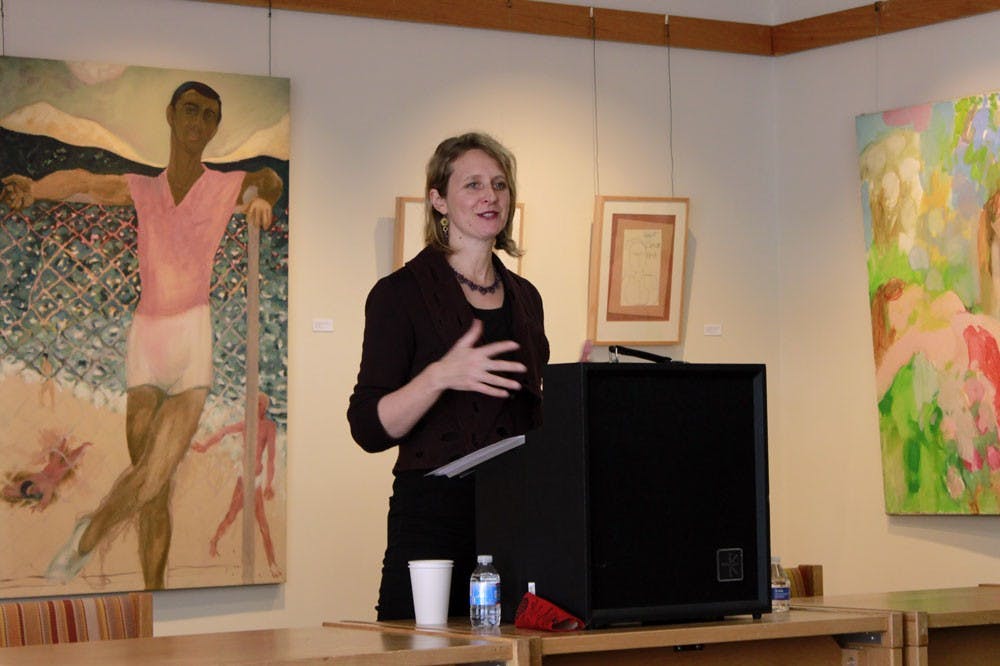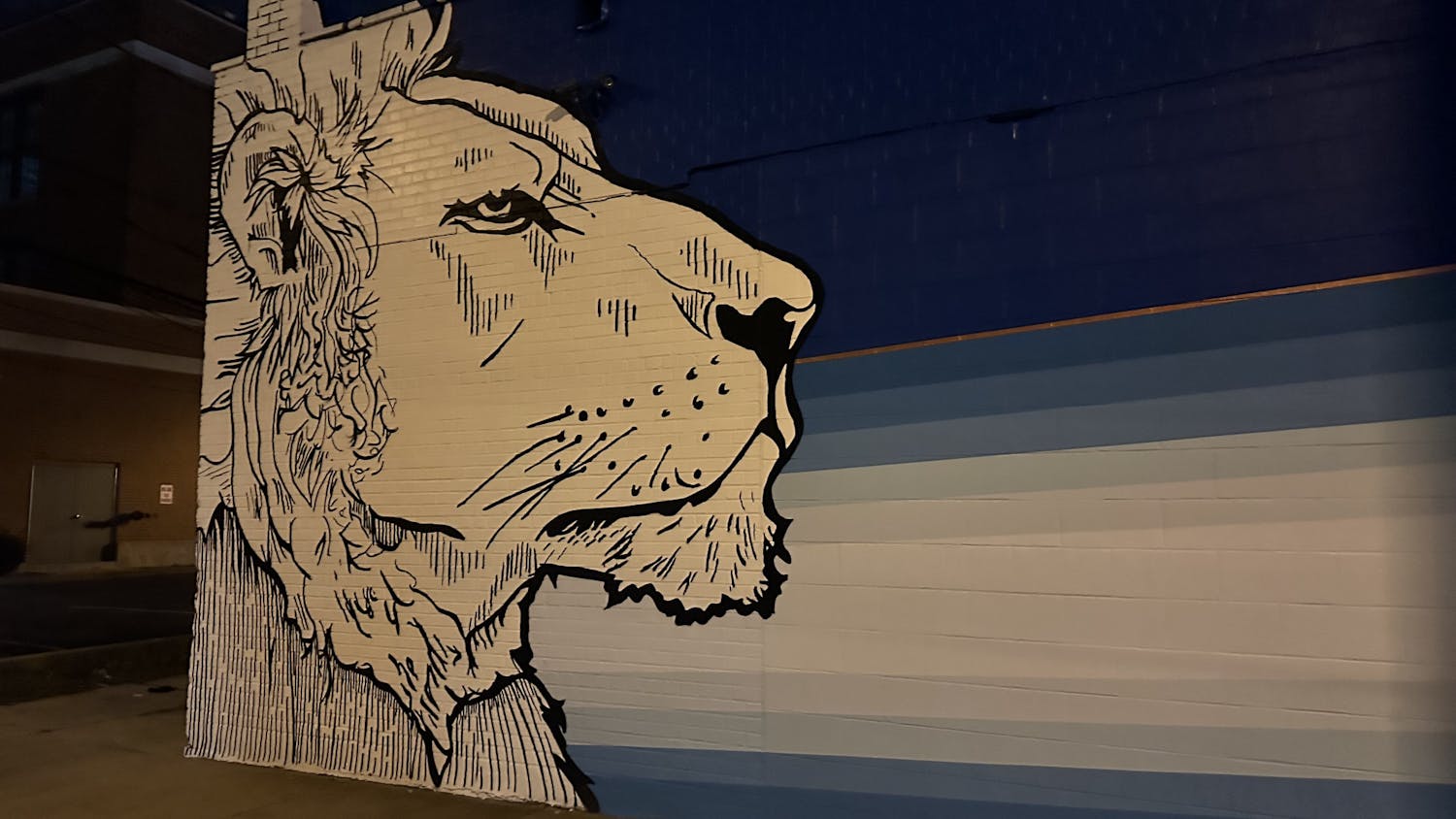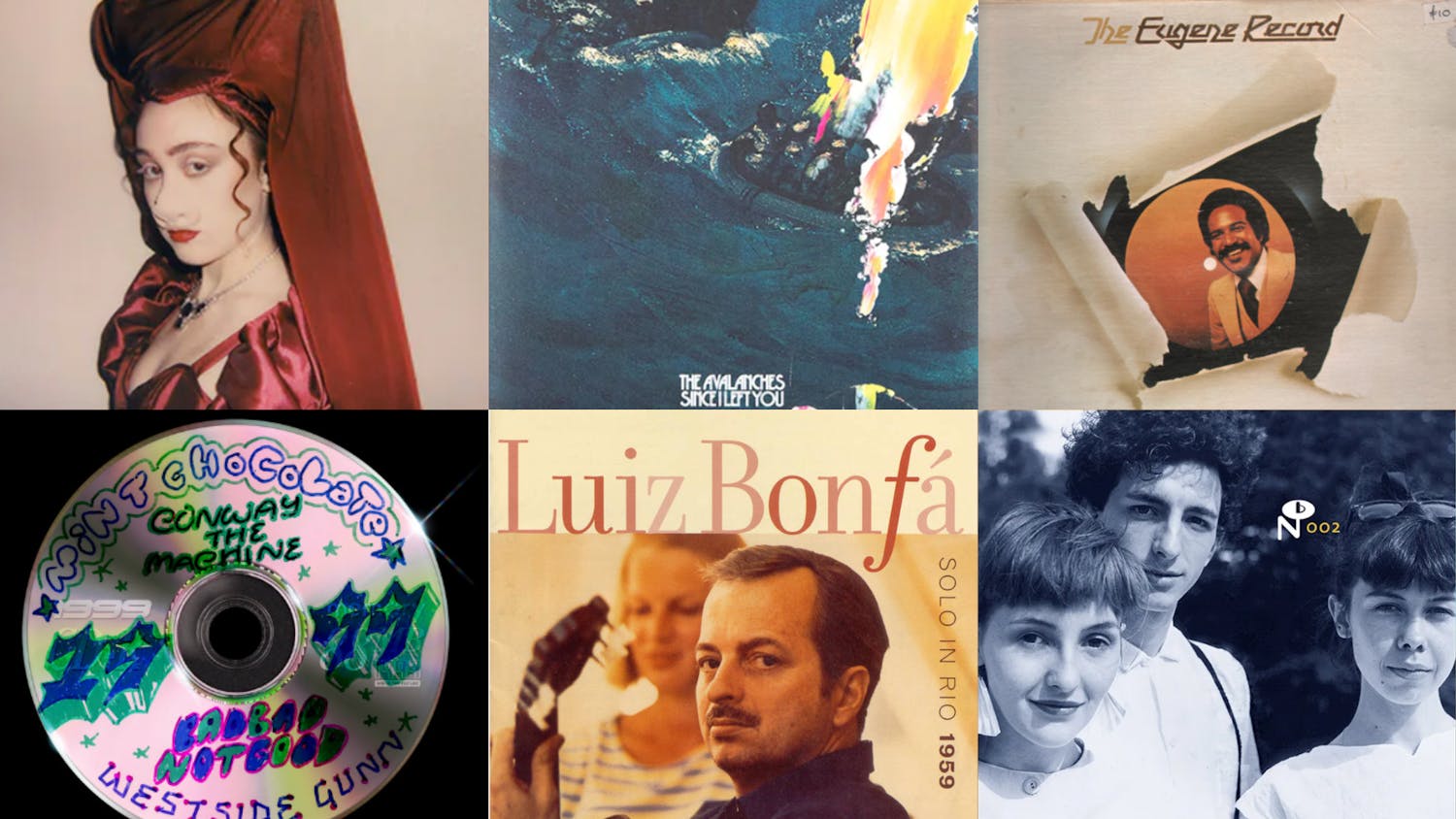Sarah Riggs asked the crowd to pick any letter beside “S” and “R.”
The letter would decide what poem she would read next, giving her audience complete control of the event.
On Thursday, Riggs shared her literary talents as part of the Poetics Plus series. She is the author of five books, translator of another six and an active visual artist. Riggs was born in New York and lived in Paris for nearly a decade. Her work is largely influenced by her time in France and the process of translation.
Riggs’ Parisian background was quickly exposed to the audience once she read hersecond poem, “J,” which was entirely in French. Though the crowd didn’t understand what the poem was saying verbatim, there was still a sense of fluidity and emotion in the words. Riggs said she felt the need to immerse the crowd in a language many weren’t familiar with.
English professor Karen McCormick enjoyed this diversified language.
“I had the pleasure of experiencing a bilingual reading that was audience-friendly, even for those without knowledge of French,” McCormick said.
The first set of poems came from Riggs’ book Autobiography of Envelopes, which was published by Burning Deck in 2012. The book is a collection of poems that were originally written on envelopes and are titled with various letters of the alphabet.
Riggs’ idea of including single letters and other non-words into her reading didn’t occur until later, when she began to read Letters to the Dead.
The author suddenly began stammering and stuttering as she held up a poem that appeared to have diagonal intersecting stanzas, cutting across the page. These poems in particular swerved between conscious thought and Riggs sounding out intentional grammatical errors. Her reading is meant to make the reader feel like she moved to “the place beyond thought,” only to come running back to where she began.
“The tremendous place beyond thought; I would cease to go there. I’d like to remain here,” Riggs said.
While Riggs’ work contains many of the elements of sound poetry – a style of poetry where the artist focuses on the phonetics aspects and sounds of word instead of their meaning – her poetry varies as most of her pieces appear to be centered on a theme or moment in time. This aspect of her work provided a balance to the total abstraction that sound poetry often contains. This allows the audience to see her stuttering as a rebuilding of language instead of a breakdown of it.
In her poem, “Dear Virginia,” a dedication to author Virginia Woolf, Riggs said, “I don’t know you at all, but I plagiarized you until you become me.” Even though Riggs never translated the works of Virginia Woolf, this statement still reflects her translation process.
During the question and answer portion of the seminar, McCormick asked how translations affect Riggs’ poetic process. Riggs responded by talking about her close research of the poets themselves and how that slowly developed into translating whole books of poetry.
“When translating, you need to get into the skin of the other person,” Riggs said.
This concept is useful for words that don’t directly translate because knowing the author and their life will create a more precise guess at what they could’ve meant.
Norma Cole, one of the French poets Riggs has worked with, recently gave one of Riggs’ sculptures, “Counter Memory,” to the UB Poetry Collection in Capen 420. The sculpture consists of various quotes hanging on long white strips from a cage ceiling. The work allows you to walk inside of it and be immersed in phrases from names like James Joyce as well as the average civilian.
It’s easy to imagine that this sculpture is a glimpse into what the mind of Riggs looks like. With various quotes and phrases from the plethora of books she’s read, to the conversations she’s heard on the street, to the single letters and grammatical errors that were never meant to be, Riggs includes it all in her work.
Alexander Pennington is a staff writer and can be reached at arts@ubspectrum.com





